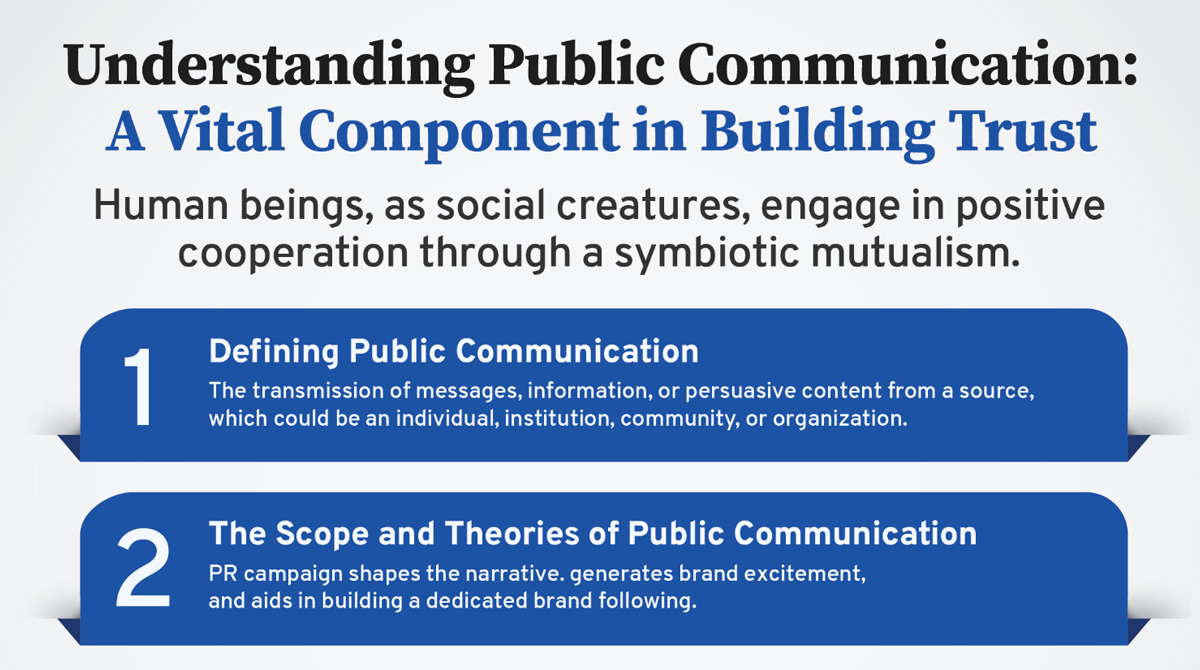
- 25 Februari 2024
- mekoga.com
- 0
Introduction:
Human beings, as social creatures, engage in positive cooperation through a symbiotic mutualism, where communication plays a pivotal role in conveying messages among peers.
This analogy extends to organizations, where communication, both internal and external, becomes integral. Public communication, defined as the process of conveying messages, information, or persuasion to a wide audience, is a crucial aspect that organizations employ to achieve effective and efficient message delivery.
Defining Public Communication:

Public communication involves the transmission of messages, information, or persuasive content from a source, which could be an individual, institution, community, or organization. Utilizing various communication media, both offline (face-to-face) and online (digital), public communication targets a broad audience with the aim of achieving effective and efficient communication goals.
The Scope and Theories of Public Communication:

Experts outline the diverse scope of public communication, covering social marketing, persuasion matrices, agenda-setting theory, diffusion of innovations theory, and more. The variety in theories emphasizes the flexibility and adaptability of public communication strategies.
Elements of Successful Public Communication:

Drawing parallels with human communication, successful public communication involves essential elements such as a communicator (message source), a communicant (message receiver), the message itself, feedback, and potential disruptions. In the context of organizations, the communicant could be an institution or an individual, with the audience being the general public.
Characteristics of Public Communication:
Public communication stands out due to its continuous nature, clear identification between the message source and receiver, limited interaction between the two, and the pre-formulated nature of the messages.
These characteristics distinguish public communication from other communication types.
Objectives and Benefits:
Public communication serves various objectives, including building institutional image and reputation, shaping public opinion, processing and managing messages, and capturing evolving public sentiments. The benefits extend to both communicators and recipients, contributing to informed decision-making, enhanced public awareness, and the establishment of a positive institutional image.
Conclusion:
In conclusion, public communication is a dynamic and essential component for organizations to connect with their audience effectively. With its multifaceted scope, diverse theories, and strategic objectives, public communication emerges as a tool for building trust, disseminating information, and fostering meaningful connections. The success of public communication lies in its ability to adapt, engage, and achieve its intended goals while navigating the complexities of audience perceptions and expectations.
